50 Words or Less
Sedge Valley, the fifth course at Sand Valley in Nekoosa, Wisconsin, offers a more intimate round of golf than its brothers. While it’s generous off the tee, strategic thought is required on every shot. A course you’ll instantly want to replay.
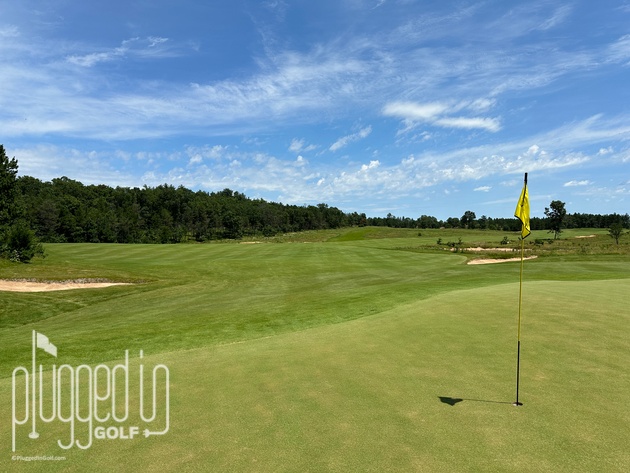
Introduction
Just a year after opening The Lido, Sand Valley has added a fifth course to its roster: Sedge Valley. Playing to a par of 68 it’s a bit of an oddity, but the people behind Sand Valley are not afraid to give the golfing public something new. After my round there, I’m hopeful that Sedge Valley can be a trend setter the way that Bandon Dunes has been.
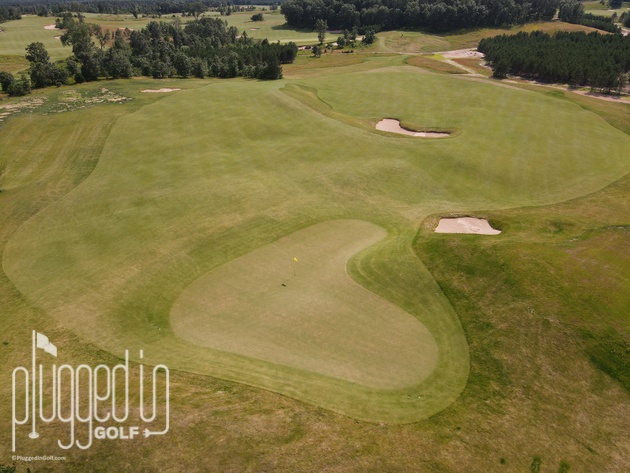
Practice Facilities
Sedge Valley shares its practice facilities with the other Sand Valley courses. Having four full-length courses sharing a driving range doesn’t sound ideal, but this range is big enough to carry the load. There is also a short game area with two large practice greens. The practice facilities are a short shuttle ride from the first tee at Sedge, so make sure to leave yourself ample time to warm up.
My visit to Sedge Valley came during a media preview day. The putting green was not yet open, but I saw the area where it will sit, behind the pro shop and The Gallery restaurant. Knowing Sand Valley, this green will mirror the course conditions perfectly so you can get your flat stick ready to make birdies.

Customer Service & Amenities
Caddies are an essential part of the Sand Valley experience. Despite Sedge Valley being brand new, our caddie, Teal, was already prepared to give us the best lines off the tee and impeccable reads on the green. Regardless of which course you’re playing at Sand Valley, I would strongly recommend taking a caddie.
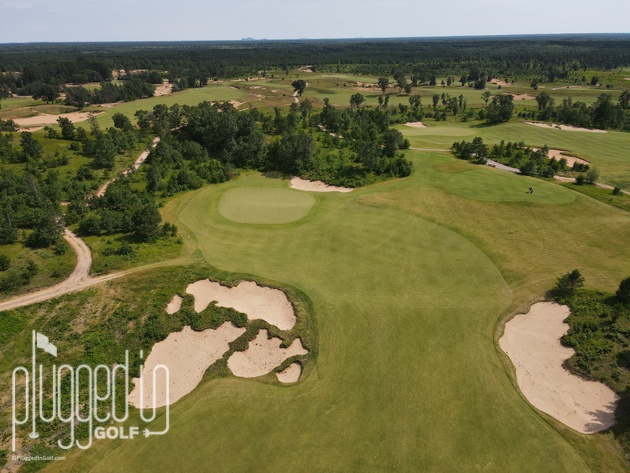
One of the exciting new things that comes along with Sedge Valley is another Sand Valley restaurant: The Gallery. The focus is on Italian food, especially delicious thin crust pizzas. Along with your food, you’ll get views of the golf course, grass tennis courts, or indoor tennis. At the time of this writing, The Gallery is a dinner-only venue.
The Sedge Valley pro shop is similar in size to the one found at The Lido [review HERE], which I found ideal. It’s stocked with premium soft goods featuring Sedge’s fox logo.
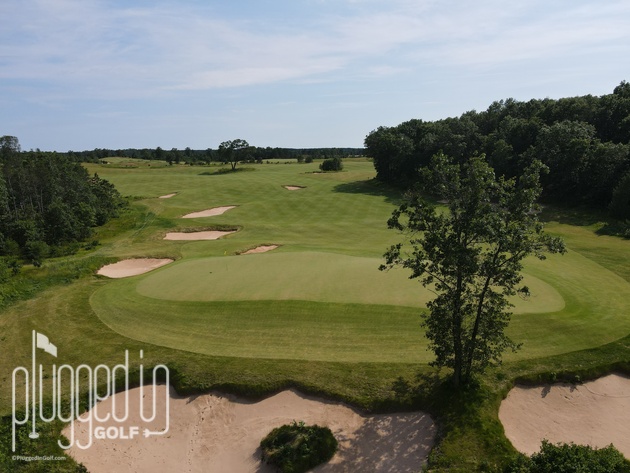
Beauty & Scenery
Sedge Valley is a gorgeous golf course that shares some DNA with Mammoth Dunes and Sand Valley but is clearly its own creation. Sedge was inspired by the heathland courses in England. It has a rich, green landscape with splashes of sand, the inverse of Mammoth Dunes [review HERE]. And while it feels open and airy, it doesn’t have the overwhelming scale of Mammoth.
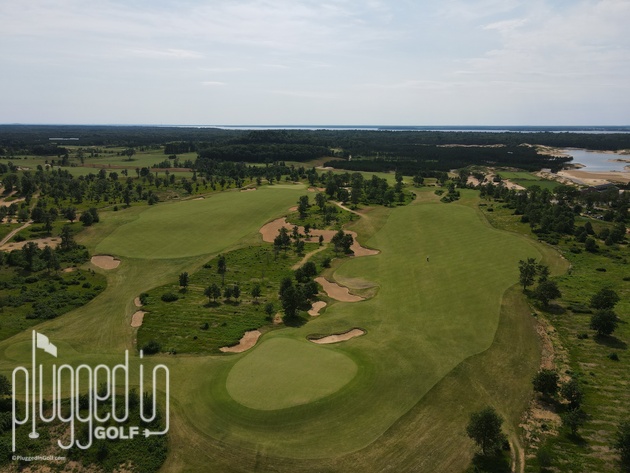
Among the words I’d use to describe Sedge are “subtle” and “natural.” Many course designers talk about moving very little dirt, but that actually feels true here. There aren’t any contrived features screaming for attention. This allows the player to appreciate the movement of the land, focus on their game, and be fully present in the round.
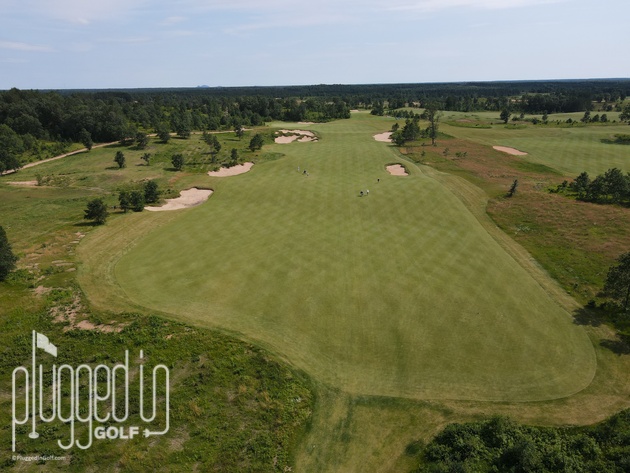
Tee Shots
Any discussion of Sedge Valley needs to start with the unusual numbers. This course plays to a par of 68 – just one par five and five par threes – and it tips out at 5,829 yards. There are three sets of tees plus two combo sets; the shortest tees measure 3,753 yards.

In our foursome, we had a player who drives it over 250 yards, one around 230, and two below 200 yards. We played from the tips, though I will note that the tees were not all the way back. I’d like to give a concise report like, “Our longest player hit nothing but wedges into greens,” but that’s not accurate. Sedge Valley has tremendous variety in its length of holes. Some holes will tolerate an overly ambitious tee box selection, others will severely punish it. I think most players will get all they want from the middle tees.
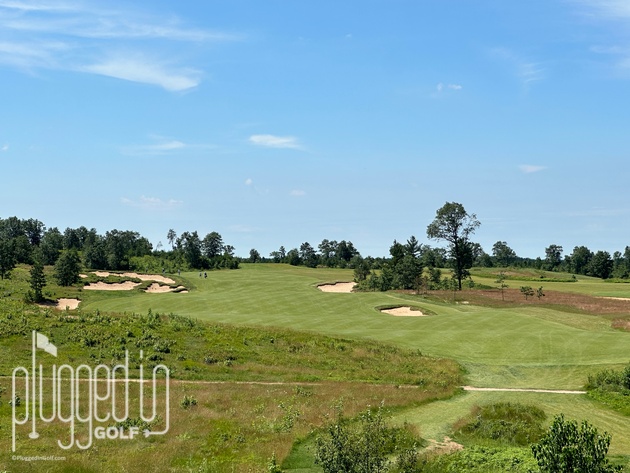
Architect Tom Doak stated that Sedge Valley “may require some compromises from the long and wild hitter,” but that does not mean this is a narrow course. Most of the fairways are wide, though not as generous as Mammoth and Sand Valley [review HERE]. Being precise off the tee can yield some advantages, setting up preferred angles into greens, but any player aiming down the middle will find ample room.
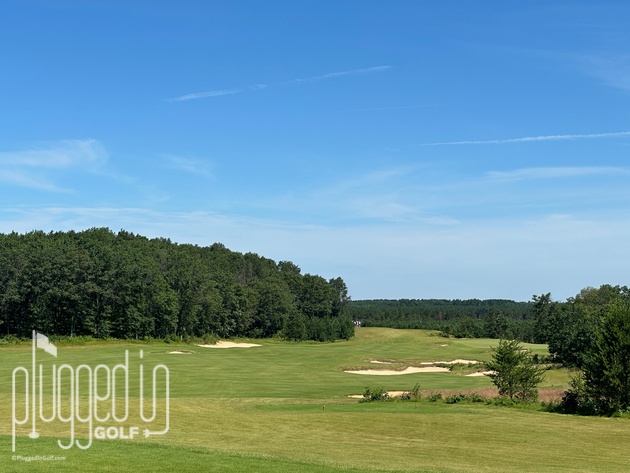
The one thing that makes Sedge challenging off the tee – especially your first time around – is the inability to perceive the movements of the fairway. There is a great deal of undulation in the fairways, but they look mostly flat from the tee. This can make it hard to know where to aim, to perceive distances, and to pick a precise line. The simple solution is to take a caddie and trust their advice.
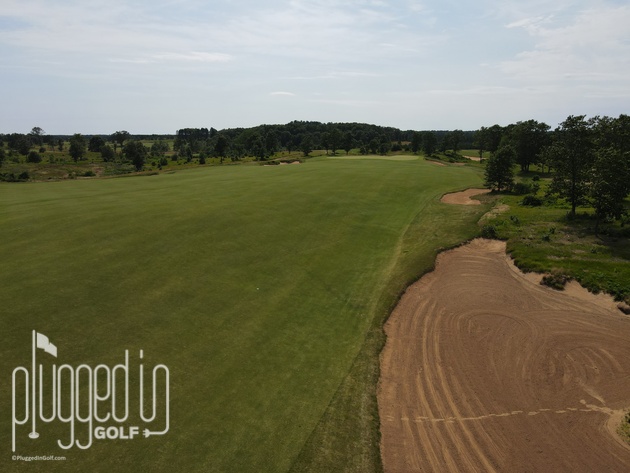
Approach Shots
Continuing on the theme of fairway undulations, you’ll be forced to hit your approach shots from a variety of lies at Sedge Valley. There are some flat, driving range lies, but more often you’ll have an uneven stance. These rises can sometimes block your vision of the green, which is the biggest tax, especially for the first timer. There are also at least two instances where one side of the fairway falls off dramatically, making your approach not only blind but more uphill (see above). When your caddie tells you to avoid a certain side of the hole, listen.
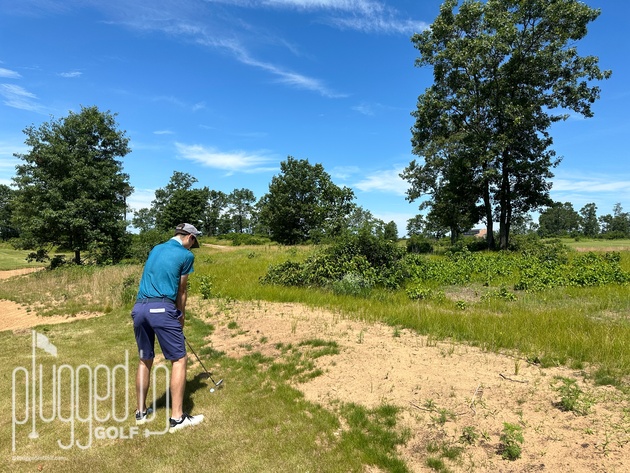
If you leave Sedge’s generous fairways, you’ll find a thin but meaningful cut of rough. It’s just enough to put a little chance into your second shot. The rough also serves a helpful purpose of keeping your ball out of the tall grass. Should you get truly wayward off the tee, you’ll find grasses that range from tall and wispy to “There is no no chance you’re finding your ball.” The latter is more rare, but it does exist.
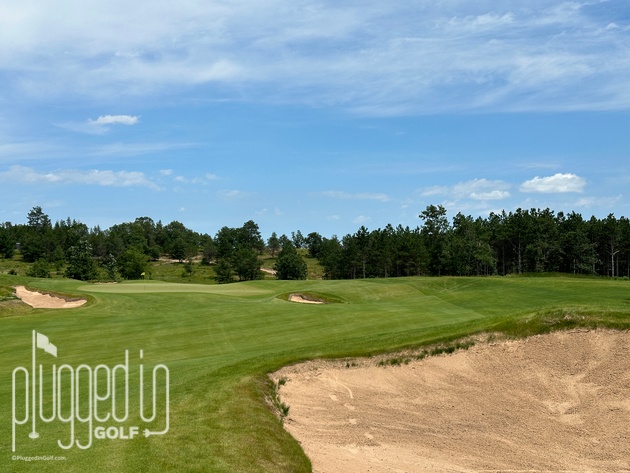
The size of the greens is the features that most distinguishes Sedge Valley from its counterparts at Sand Valley. Though not objectively tiny – they have an average depth of 38.4 yards – these greens feel small. That’s the result of the contours, the shape, and the way they’re presented to the approaching golfer. Take a careful look at the pin sheet to discover where there might be unseen green that you can use.
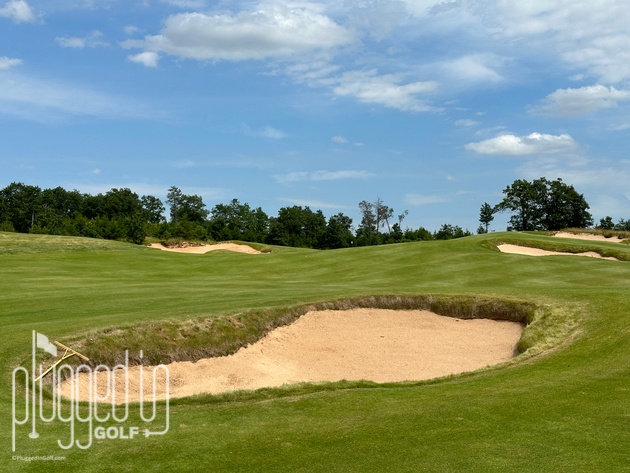
Finally, one thing Sedge Valley shares with its brothers is firm and fast conditions. The greens are not as firm as those at The Lido, but mediocre approach shots will not stop where they land. The benefit of these conditions is that they open up running approaches, if you have the precision to navigate the undulating surrounds.

Greens & Surrounds
While Sedge Valley feels open off the tee, the green sites feel intimate. This feeling comes from the smaller size of the greens and the mounding around them. What struck me most about the undulations in the surrounds is the balance of help and hurt. The eighteenth green (above) is the most stark example. Whether you’re coming from the upper or lower fairway, the banks on either side of the green help to feed your ball onto the putting surface. However, those same banks can add some challenging break to your putt, and there’s a testy shoulder in the middle of the green.
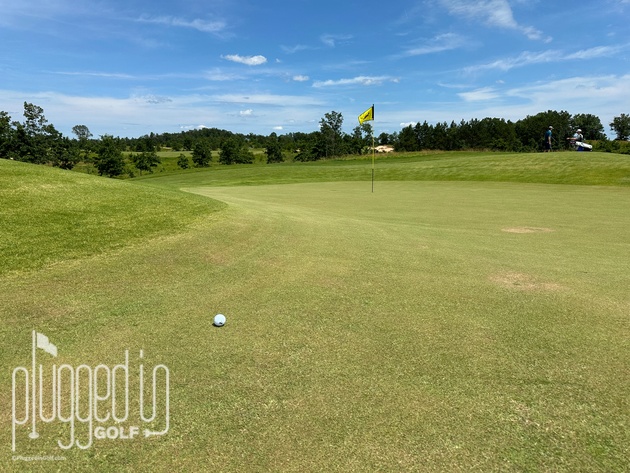
Despite being brand new, the greens rolled smooth and true. The undulations are generally moderate in size, but easily noticeable – you shouldn’t be fooled if you’re paying attention. Running around a 9 or 10 on the stimpmeter, the greens offered a good challenge, but no putt felt impossible. The smaller green sizes put more emphasis on line than distance, but three putts are always in play if you get careless.
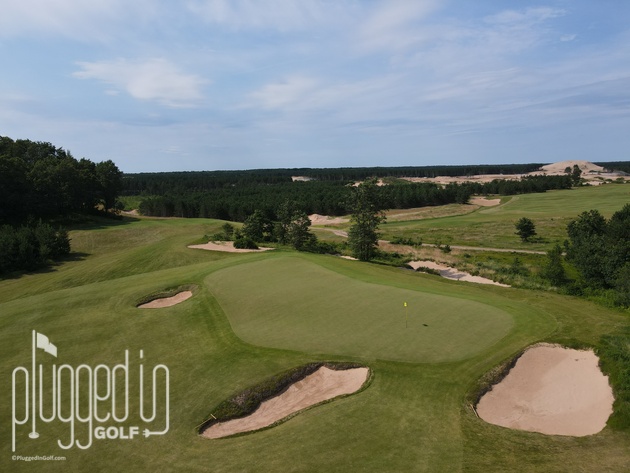
The surrounds at Sedge Valley are mostly puttable, cut to a fairway length, but there are spots of light rough. The undulations will dictate your approach around the green more than your lie. If your short game lacks a high, soft shot, you’ll need to be expert in navigating the mounds and judging speed.
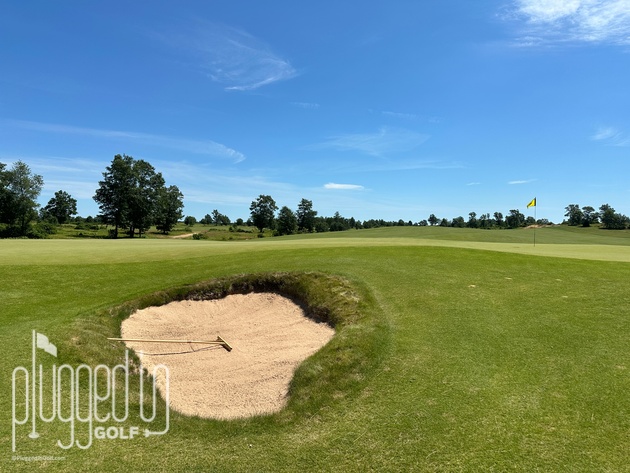
The one occasionally cruel element is the sand. There are not an overwhelming number of bunkers, and most are average in size and easily visible. Then there are these nasty hazards like the one above, hidden behind #2, or the sliver of sand behind #5. These are Tom Doak’s way of telling you to think your way around the course rather than mindlessly firing at the flag.

The other way that Doak emphasizes strategic approach shots is with the elevation around the greens. On numerous holes, one side of the surround is very tame and the other falls off steeply, as seen above. To avoid these drops, you may need to play dramatically away from the flag. I can’t fault anyone who says, “This is a bucket list round, I’m firing at every pin,” just know that plan may have unfortunate consequences.
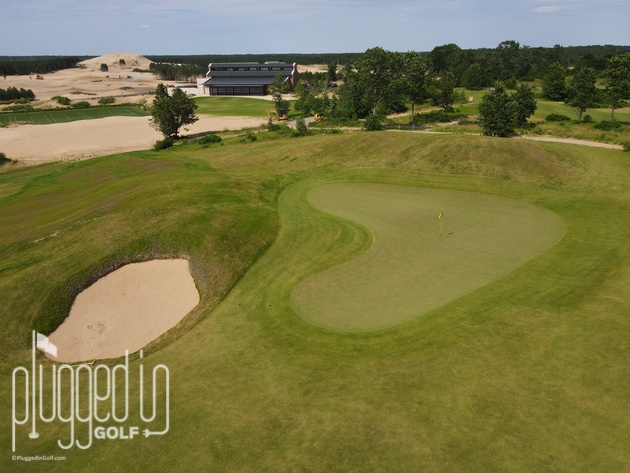
Overall Design
As we walked the final few holes at Sedge Valley, Dylan declared that it was his favorite at Sand Valley. I balked at this statement; five years ago, I rated Mammoth Valley as #1 on my Five Forever Golf Course list [read more HERE]. However, as I’ve reflected on the round, I find it hard to argue against Sedge. It gives me everything I want in a golf course.
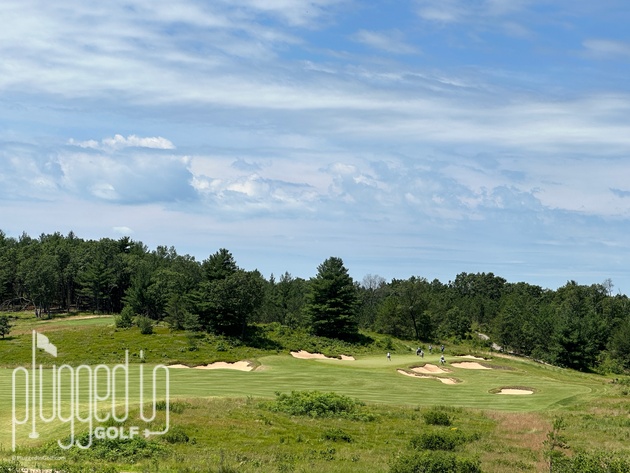
Off the tee, it’s generous but not boring. There are choices to make, and great shots will get an advantage over good or average ones. Into the green, Sedge asks for precision but doesn’t beat you up for being less than perfect. Thoughtfulness is rewarded, but you don’t need loads of local knowledge to survive.
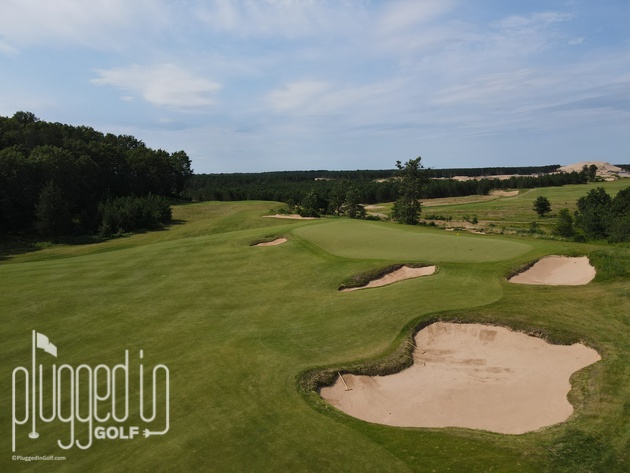
Ultimately, Sedge Valley is a golf course that’s subtle. It feels big but plays precise. Bogeys are easy, but pars and birdies require craft, focus and skill. And it has the highest golf course virtue: replayability. Before the round was over, I was thinking ahead to my next time out and the shots I’d like to try.
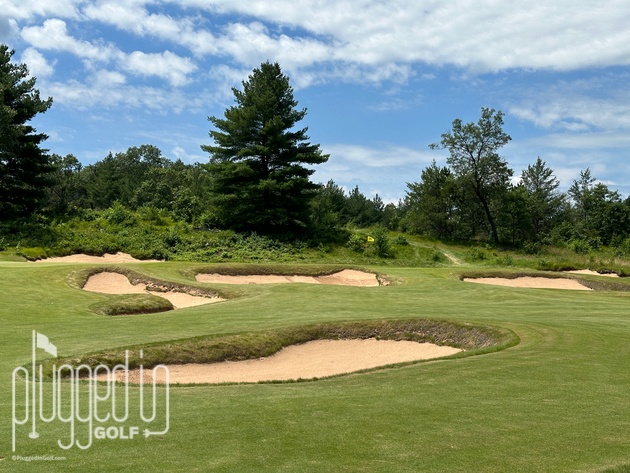
Favorite Holes
#6 – Par 4 – 294 Yards
There are three par 4s under 320 yards at Sedge Valley, and debating the best one will be a fun part of every post-round meal. My choice is #6. From the tee, you can hit a shot of no more than 200 yards into a wide open fairway to the left. The other option is to challenge the green. Choosing the former leaves a fairly easy wedge shot that requires some left-to-right precision but has ample room long and short. Driving nearer the green puts you in a minefield of bunkers with an uphill pitch to a green that’s only 15 yards deep. The two shortest hitters in our group walked away with par. The long hitters did not.
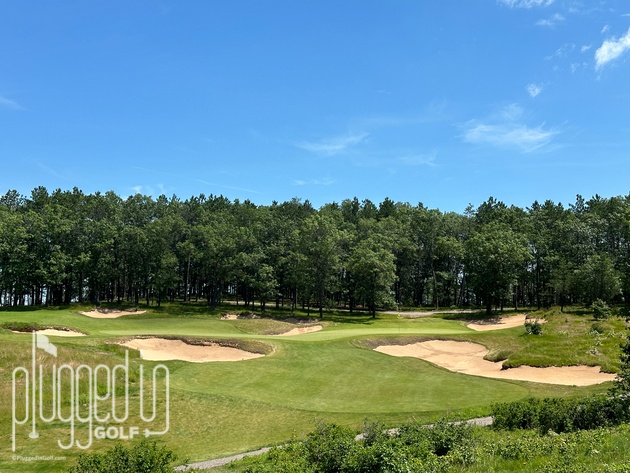
#5 – Par 3 – 136 Yards
My favorite of Sedge’s five par 3s starts with a carry over a low area, giving the green an elevated look. The green is very wide but demands precise distance control. Getting near the flag is essential if you want a realistic birdie putt as the green is heavily segmented. If you aim for the middle of the green, beware of one of the nastiest bunkers on the course just over the back.

#18 – Par 4 – 318 Yards
The finishing hole at Sedge Valley is going to be the favorite of many players. Your tee shot asks you to choose between two fairways. Getting to the upper level provides a clear look at the green and a better angle. From the lower fairway, you’ll have a blind shot to a fairly small green. The punchbowl-style surround invites aggressive approach shots and can help you walk away with a closing birdie.
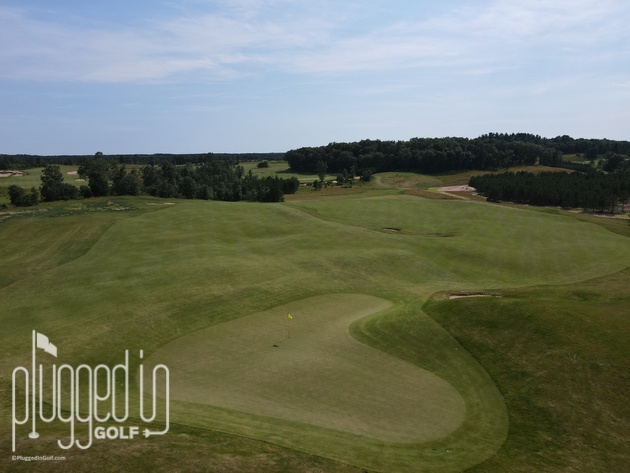
Conclusion
I’ve been visiting Sand Valley Golf Resort since it was little more than an idea. With the addition of Sedge Valley, it’s truly become the midwest Bandon Dunes. The five courses here offer golfers the fuel for endless conversations about which one is the best. If you’ve been putting off your visit to Sand Valley, now is the time to make the trip.
Visit Sedge Valley HERE
He founded Plugged In Golf in 2013 with the goal of helping all golfers play better and enjoy the game more.
Matt lives in the northwest suburbs of Chicago with his wife and two daughters.
- Performance Golf Click Stick Training Aid Review - October 18, 2024
- Callaway Opus Platinum Wedge Review - October 17, 2024
- When to Take a Break from Golf - October 15, 2024


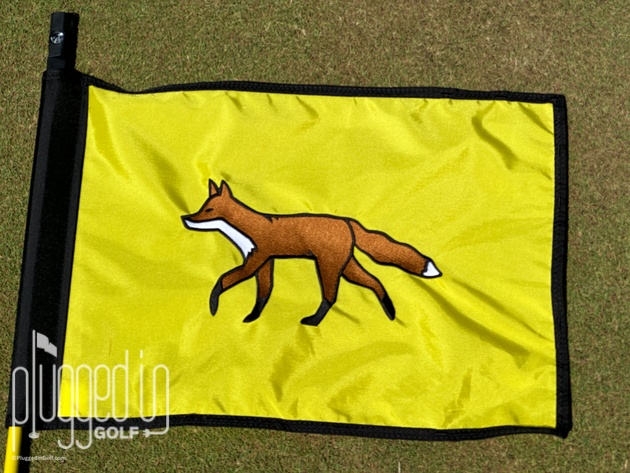












5 Comments
Great review, Matt. Heading there in August to play six rounds in four days (all four big courses), not counting evenings at the Sandbox. Nirvana level stuff. Quick question regarding strategy – did you find the reward for trying to get close on the short par-4’s (from the tips) was typically not worth the risk? In other words, were the risk/reward holes basically green or bust? As a long(ish) hitter, I prefer to have a strategy and stick to it versus playing it out in the moment. Thanks!
Jim,
Great question. #6 is definitely green or bust. The others aren’t definitively that way, but there are some bad spots by the green. Unfortunately the course is so new that it’s not on Shot Scope MyStrategy or Shot Pattern yet to give you a more definitive answer.
Have a great trip,
Matt
Thanks, Matt. I’ll check out Strackaline as I think they have the course mapped there, but appreciate the insight. I find short par 4’s enticing to go for when the green has at least one decent bail out zone.
One of my favorite golf stories:
I was playing TPC Sawgrass on my first “big” media trip. Hole 16, par 5, I hit a great drive and am standing in the fairway leaning on a 7I waiting for my turn. The forecaddie walks up behind me and says, “I don’t think that’s going to get there.” I replied, “You’re right, but the club that will get there is probably going to end up in the lake.” He turns away and says, “Yeah, that’s cool, because you play here all the time.” I threw down the 7I and said, “F*** you, give me the hybrid,” which I promptly buried in the grandstands left.
I think about that guy every time I play, no matter the course. We’re playing a game. Have fun. No one tells stories about making boring pars. I don’t remember what score I ended up with on #16, but I have that story forever. And if I had made the eagle or birdie, it would be an even better one.
Best,
Matt
Ha – what a story. That sums up golf in a lot of ways. Sometimes you’re out to shoot a score, others it’s all about the experience. Going to the Old Course next Summer with my Dad – I will remember this story then as well.